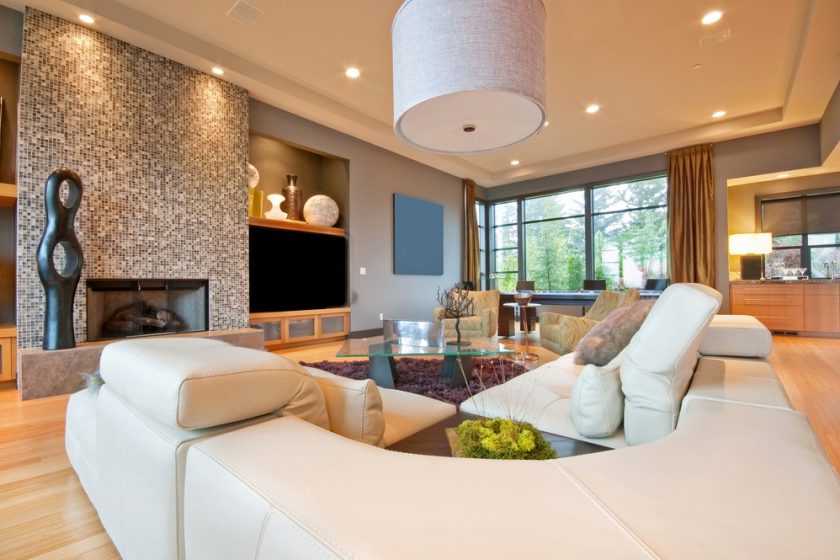Designing a villa’s interior might be difficult because you need to mix style and functionality. Most villas are big, open areas that are meant to be used for fun and relaxation. The important thing is to find the right balance of style and usefulness for the people who will be living in villas. Some popular villa interior design types styles are:
- Modern: Characterized by clean lines, minimal clutter, and a neutral color palette.
- Minimalist: Emphasizing simplicity, open spaces, and minimal furnishings.
- Rustic: Inspired by nature, featuring raw materials, earthy colors, and a cozy ambiance.
- Classic: Timeless elegance with attention to detail, luxurious textiles, and rich colors.
Each style has its charm and appeal, but the key is to choose one that resonates with your taste and lifestyle.
Several Tips To Balance Style And Functionality.
Define Priorities and Lifestyle
Interior designers in Dubai meet with clients to learn about their goals and way of life before they start designing a villa. It helps you decide between style and usefulness. Some important questions are:
- Is the house going to be a vacation home or your main home? Since vacation homes won’t be lived in full-time, they can put style over function. Villas that are used as primary residences need to work well for everyday life.
- What aesthetic style do you prefer – modern, classical, or minimalist? The style should align with personal taste.
- How do you plan to use the space, and for what purpose? Large parties, intimate gatherings, family time? The functionality should support the intended activities.
- How many people will be using the villa and doing what activities? Understanding usage and traffic flow is crucial.
- Are there any specific functional needs? For example, a home office space or a large dining area. Unique needs inform the design.
The designer can craft a vision for the villa that caters to both style and functionality. They keep the client’s lifestyles and priorities in mind.
Create Purposeful Zones
Designers may partition a villa into discrete zones according to function or activity. For example:
- Social zones for relaxing and entertaining
- Family zones for casual activities
- Private zones for beds & bathrooms
- Work zones for home office needs
It gives artists the freedom to change how each area looks and works. Family zones are practical and have fun touches, while social zones can be more stylish but have less storage room. In private areas, comfort is more important than style. Setting these zones makes it clear how to balance the villa’s looks and practicality in each area.
Use Multifunctional Furniture
When designing a villa, using multifunctional furniture is a smart strategy to maximize function without sacrificing style. Pieces that serve more than one purpose earn their place over decorative-only furnishings. For example, ottomans can double as coffee tables for both extra seating and surface area. Sofas with slide-out work surfaces blend relaxing and occasional working needs.
Beds with built-in storage on both sides satisfy bedside utility while streamlining the furnishings. Multifunctional pieces like these allow homeowners to get more use out of every item while maintaining an aesthetic look. This functionality also works well for open-concept spaces. By selecting furnishings that can multitask, villa interiors achieve better daily utility while still providing visual appeal.
Evaluate Traffic Flow and Space Planning
A villa that looks amazing but has poor traffic flow will frustrate homeowners. Designers carefully assess the floor plan to ensure space planning meets lifestyle needs. Key factors include:
- Creating open pathways that easily move people between zones
- Placing frequently accessed rooms conveniently close
- Allowing adequate space around furnishings for circulation
- Accommodating any special mobility device needs
Sometimes, this means sacrificing ideal furniture arrangements for better home flow and functionality. The trade-off is worth it for livable daily spaces.
Select Stylish yet Durable Materials
The materials used should balance appearance and durability. For example:
- Beautiful natural stone flooring that holds up to heavy use
- Textured wall paint in rich colors that hide scuffs
- Stain-resistant fabrics and leathers for upholstered pieces
- Subtle yet durable countertops like quartz or solid surface
Using high-quality materials designed to age well allows for stylish spaces that are able to handle wear and tear.
Conclusion
Creating a beautifully designed villa that works for real life requires balancing visual appeal and functionality. Designers achieve this by understanding homeowner priorities, dividing the villa into activity zones, using multifunctional furniture, evaluating circulation flow, and selecting attractive, durable materials. Concentrating on lifestyle needs while accenting design elements based on preferences helps strike the right balance between style and utility. The result is a villa that wows visually while serving its residents day-to-day. With some strategic planning, villas can have both beauty and livability.

